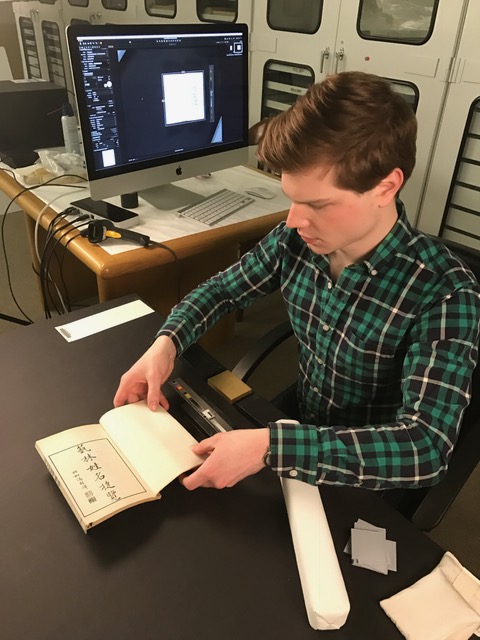The Edo period (1600-1868) in Japan was a time of prolonged peace. Ruling under an isolationist foreign policy (Sakoku) and with no civil wars, the Tokugawa Shogunate government focused on more »
Tag: Japanese art
We wish you warmth and joy this holiday season! The book featured in this video is Tokaido gojusantsugi by Hiroshige Ando published in 1868. The translated title is 53 Stations more »

The Freer | Sackler Library of the Smithsonian Libraries have completed digitizing over 1100 volumes/41500 images from its collection of illustrated Japanese woodblock-printed books and manuscripts from the Edo and Meiji periods (1600-1912). The Libraries’ digitization project was generously funded by the Anne van Biema Endowment Fund.
This post was contributed by Matt Alt. Matt is the co-founder of AltJapan Co., Ltd., a Tokyo-based localization company that specializes in producing the English versions of Japanese games, manga, and other entertainment. Together with Hiroko Yoda he is the co-author of Yokai Attack! The Japanese Monster Survival Guide, and the upcoming Japandemonium Illustrated: The Yokai Encyclopedias of Toriyama Sekien which features images from the Smithsonian Libraries volumes of Toriyma Sekien’s works.
This post was written by Reiko Yoshimura, head librarian of the Freer Gallery of Art and Arthur M. Sackler Gallery Library.
As a result of the development of Japonisme in the 1860s, Japanese art and crafts became increasingly popular, especially in Europe. Following the Meiji Restoration (1868), the Japanese government began exhibiting a vast amount of art and craft objects in world expositions, namely, World’s Columbian Exposition (1893) and Paris expositions (1867, 1889, 1900), which led to actively promoting domestic craft production.

